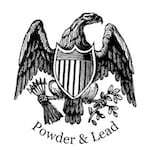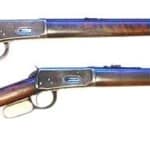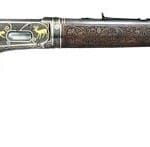
Introduction to the .32-40 Ballard
The .32-40 Ballard, also known as the .32-40 Winchester, is a rifle cartridge that dates back to the late 19th century. Originally developed as a black powder target round, it quickly gained popularity for its outstanding accuracy and mild recoil. While it was first designed for single-shot rifles, it later became available in lever-action rifles, most notably the Winchester Model 1894.
Despite the passage of time and advancements in ammunition technology, the .32-40 Ballard remains a beloved cartridge among competitive shooters, collectors, and handloaders. In this article, we will explore its origins, ballistics, firearms chambered for it, reloading options, and enduring legacy.
Origins of the .32-40 Ballard
The .32-40 Ballard cartridge was introduced in 1884 by Marlin Firearms, which had acquired the rights to produce Ballard rifles, originally developed by Charles H. Ballard. The cartridge was designed specifically for Schuetzen (offhand) target shooting, a sport that was immensely popular in the late 19th and early 20th centuries.
Unlike many hunting cartridges of its time, the .32-40 was built with precision shooting in mind. It offered a 165-grain lead bullet propelled by 40 grains of black powder, delivering moderate velocity and excellent accuracy. The name .32-40 follows the standard 19th-century cartridge naming convention: .32 caliber bullet over a 40-grain black powder charge.
Development and Adoption by Winchester
While initially chambered in Ballard single-shot rifles, the cartridge gained widespread recognition when Winchester Repeating Arms adopted it for their Model 1885 High Wall rifle. This move introduced the cartridge to a broader audience, including marksmen, hunters, and competitive shooters.
However, the biggest boost to the .32-40’s popularity came in 1895, when Winchester chambered it in their famous Model 1894 lever-action rifle. This marked the first time the .32-40 was used in a repeating rifle, greatly expanding its appeal. Despite the introduction of more powerful cartridges like the .30-30 Winchester, many shooters still preferred the mild recoil and pinpoint accuracy of the .32-40 for medium-range shooting and small to mid-sized game hunting.
Cartridge Design and Ballistics
The .32-40 Ballard is a bottlenecked cartridge, contrary to some misconceptions that it is straight-walled. Below are its technical specifications:
- Bullet Diameter: .321 inches
- Case Length: 2.13 inches
- Rim Diameter: .506 inches
- Neck Diameter: .343 inches
- Base Diameter: .424 inches
- Maximum Overall Cartridge Length: 2.59 inches
- Typical Bullet Weight: 165 grains (lead), later smokeless loads available in 170 grains
- Original Black Powder Velocity: ~1,350 fps (feet per second)
- Smokeless Powder Velocity (Modern Loads): ~1,700 fps
- Muzzle Energy: ~840-1,100 ft-lbs (depending on load)
The .32-40 is not a high-velocity round, but it is incredibly consistent. The slow-moving, heavy bullet offers excellent stability and accuracy, which is why it was so popular in Schuetzen shooting competitions.
Transition to Smokeless Powder
By the late 1890s, manufacturers began loading the .32-40 with smokeless powder, increasing velocity while maintaining the cartridge’s renowned accuracy. Winchester and Remington both produced smokeless loads, pushing bullet speeds closer to 1,700 fps without excessive pressure.
Despite this improvement, the .32-40 never gained mass popularity as a hunting round, as the .30-30 Winchester quickly became the dominant choice for lever-action hunters. However, the .32-40 remained a preferred choice for precision shooters and black powder enthusiasts well into the 20th century.
Rifles Chambered in .32-40 Ballard
Several historically significant rifles were chambered for the .32-40, including:
- Marlin Ballard Rifles (No. 6 ½ Rigby, No. 8 Union Hill, and others)
- Winchester Model 1885 High Wall (single-shot target rifle)
- Winchester Model 1894 (lever-action repeater)
- Remington Hepburn Single-Shot
- Stevens Model 44 ½ Target Rifles
- Savage Model 1899 (limited production)
Each of these rifles was favored for competition shooting, with the Ballard and Stevens models being particularly prized among serious marksmen.
The .32-40 in Schuetzen Shooting
During the late 19th and early 20th centuries, Schuetzen matches were the pinnacle of precision rifle shooting. Competitors often fired at 200-yard targets using iron sights, and the .32-40 was a dominant caliber.
Notable gunsmiths such as Harry Pope, Adolph Niedner, and H.M. Pope crafted custom .32-40 barrels, capable of extreme accuracy. Many of these gunsmiths hand-lapped their barrels and used specialized lead bullet designs to maximize ballistic performance.
Reloading and Modern Availability
Today, factory production of .32-40 ammunition is extremely limited, with small manufacturers like Buffalo Arms Company offering custom loads. However, handloaders keep the cartridge alive, often forming cases from .30-30 Winchester brass.
Reloading Components and Data:
- Brass: Can be formed from .30-30 Winchester cases
- Bullet Weights: 165-180 grains (lead and jacketed)
- Powder Choices: IMR 4198, 4227, Unique, and Trail Boss (for reduced loads)
- Muzzle Velocity Range: 1,300-1,700 fps, depending on powder type and charge
The .32-40 remains popular in black powder cartridge silhouette competitions, where shooters appreciate its accuracy and minimal recoil.
Enduring Legacy
While not a mainstream cartridge today, the .32-40 Ballard holds a special place in firearms history. It was a favorite among precision shooters, a transitional cartridge from black powder to smokeless, and a key chambering in some of the finest rifles ever made.
For those who appreciate classic cartridges and historical firearms, the .32-40 remains a gem worth preserving. Whether used in vintage Ballard target rifles or carefully handloaded for a cherished Winchester 1894, the .32-40 Ballard continues to impress with its precision and nostalgia.
Conclusion
The .32-40 Ballard (also known as .32-40 Winchester) is a historically significant cartridge that remains cherished by target shooters and collectors. First introduced in 1884, it played a pivotal role in Schuetzen matches and early lever-action rifles. Although factory ammunition is scarce, handloaders and custom ammunition manufacturers keep the legendary .32-40 alive.
If you’re a firearms enthusiast, historian, or competitive shooter, owning or shooting a .32-40 rifle is a journey into the golden age of marksmanship. With its reputation for accuracy, mild recoil, and historical significance, the .32-40 is more than just an old cartridge—it is a symbol of precision shooting excellence.
Read more about this cartridge and others here:

If you know of any forums or sites that should be referenced on this listing, please let us know here.



